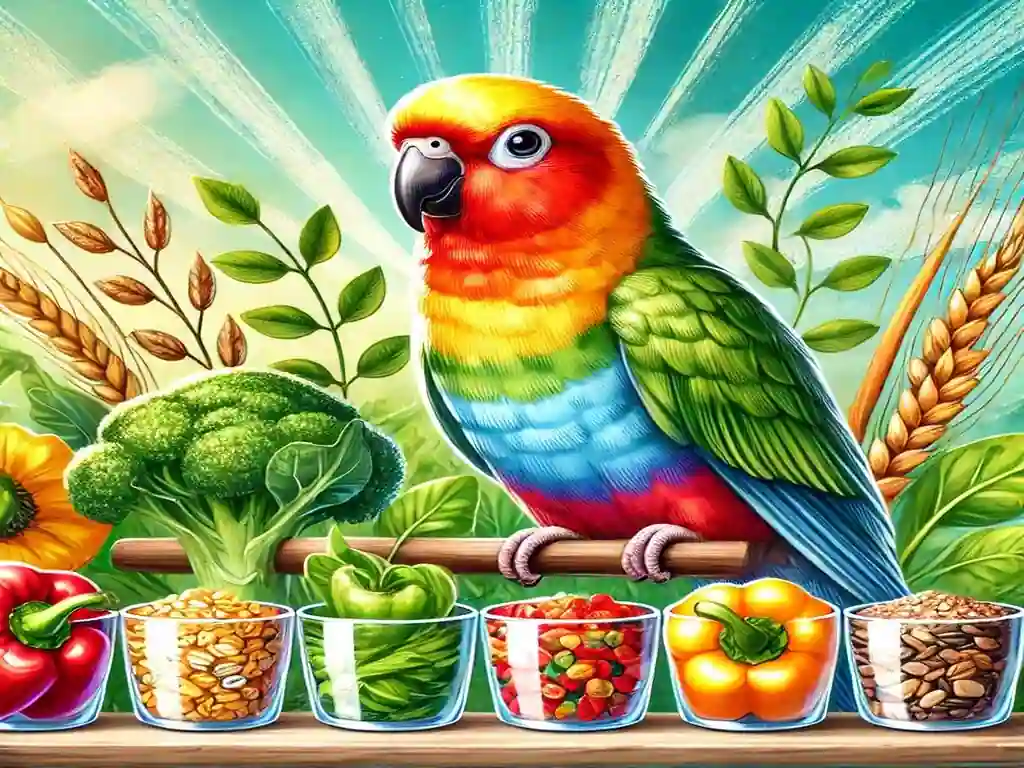Introduction
A sudden change in your bird’s appetite can be alarming, particularly if you’ve meticulously planned its diet to meet nutritional needs. Whether your feathered friend rejects its regular food or shows signs of an inconsistent appetite, such shifts can signal underlying issues.
The main causes of changes in diet are environmental stress, disease, or even boredom over foods. It’s thus a reason to identify the root cause for rectification as soon as possible.
The guide covers the most common causes and explains the strategies on how best to restore the bird’s appetite for total health and happiness.
Baby Birds Refusing Food: When to Seek Expert Help
If your baby bird stops eating, it may be due to weaning challenges or discomfort with hand-feeding. In such cases:
- Consult a breeder: Breeders are experienced in species-specific feeding habits and can offer valuable guidance.
- Visit a vet: A veterinarian can rule out underlying health issues.
For help with weaning, BirdTricks provides a free guide on proper weaning techniques, emphasizing the need for professional oversight.
Sudden Appetite Changes in Adult Birds
If your adult bird has been on a healthy diet like the Seasonal Feeding System but shows disinterest in food, consider these factors:
- Hormonal fluctuations: Hormones can mimic signs of illness, such as appetite and weight changes or altered droppings.
- Diet transitions: Switching between seasonal feeding recipes may cause temporary reluctance.
Tracking your bird’s weight and observing other behaviors can help distinguish between normal changes and health concerns.
Avoid Reverting to Unhealthy Diets
When your bird refuses healthy food, the instinct to revert to familiar but unhealthy options, like seed-based diets, is common but counterproductive. Instead:
- Focus on nutritional gains: Encourage weight gain through high-quality, muscle-building foods rather than fatty treats.
- Use healthy snacks: Incorporate bird-safe sweet vegetables, such as bell peppers or golden beets, to make meals more appealing.
Creative Feeding Techniques
Encouraging your bird to eat healthy foods may require creativity. Here are a few tried-and-true methods:
Foraging Fun
- Turn meals into foraging experiences by hiding food in toys, cups, or hollowed-out vegetables like bell peppers.
- Use textures and shapes, like wraps or kebabs, to engage your bird’s instincts for play and exploration.
Temporary Adjustments
- Experiment with textures and temperatures. For instance, offering warm or mashed foods can entice birds to try new items.
- Use temporary transitional foods, like birdie bread, to bridge the gap between the current and ideal diet.
Incorporating Variety with Seasonal Feeding
The Seasonal Feeding System is designed to provide optimal nutrition by incorporating seasonal variations. However, transitioning between seasons might require adjustments:
- Blending recipes: Combine batches from two seasons to ease the shift.
- Enticing ingredients: Add favorites like jalapeños or sweet vegetables sparingly to maintain interest.
Creative recipes like the “caterpillar rolls” or “curly pasta salad” can make feeding sessions exciting and successful.
Recipes for Health and Enjoyment
Homemade recipes can turn feeding into an interactive experience while promoting good eating habits. Examples include:
- Stuffed bell peppers or pasta shells: These recipes mix healthy vegetables with enticing carbs to encourage tasting.
- BirdTricks Crumbles: These foot-held snacks mimic Nutri-Berries, making them fun to eat while introducing nutritious ingredients.
- Healthy omelets: Mix fresh foods or pellet powder into egg-based recipes for added appeal.
The Seasonal Feeding Cookbook offers over 100 recipes tailored to birds, providing a resourceful tool for keeping meals fresh and engaging.
Understanding the Red African Grey Parrot: Costs, Lifespan, Maintenance, and Talking Abilities
Behavioral Observations and Long-Term Goals
Understanding your bird’s eating behavior is key to finding lasting solutions:
- Texture preferences: Some birds prefer food they can hold, while others enjoy tearing apart soft leaves or crunchy items.
- Nutritional balance: Avoid overusing carbs or fruits, even as temporary tools. Focus on vegetables and protein-rich options.
Encouraging play during mealtime not only stimulates your bird’s mind but also promotes healthy eating habits.
When to Seek Professional Advice
If your bird’s appetite issues persist despite creative feeding methods, reach out for professional guidance:
- BirdTricks Support: Their customer service team offers personalized advice on diet conversion and problem-solving.
- Veterinary consultation: Persistent appetite loss or weight changes may indicate an underlying health issue that requires medical attention.
Conclusion
A bird refusing food doesn’t have to mean reverting to unhealthy habits. With a mix of creativity, patience, and expert advice, you can guide your feathered friend back to enjoying a nutritious diet. For a wealth of inspiration, explore the Seasonal Feeding Cookbook and connect with BirdTricks for tailored support. By staying committed to your bird’s long-term health, you’ll ensure a happier, healthier life together.
How Much is a Macaw Parrot? Exploring the Costs and Care in the USA

